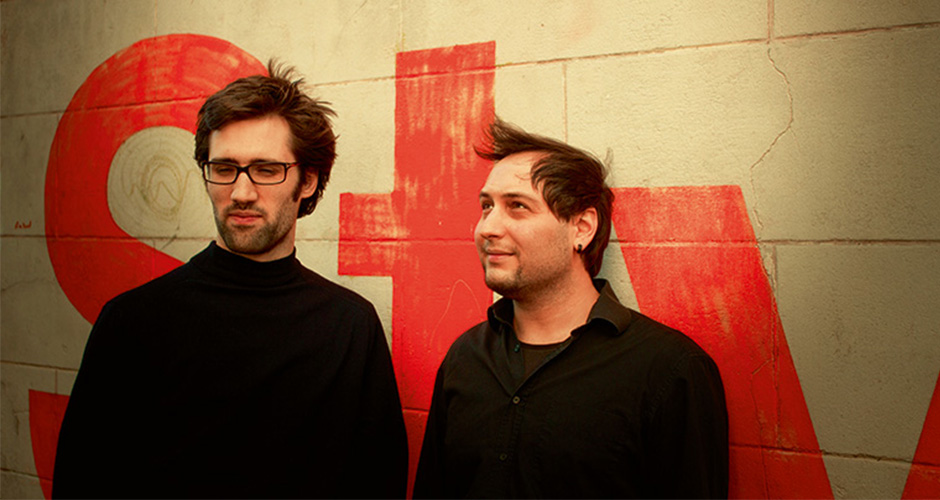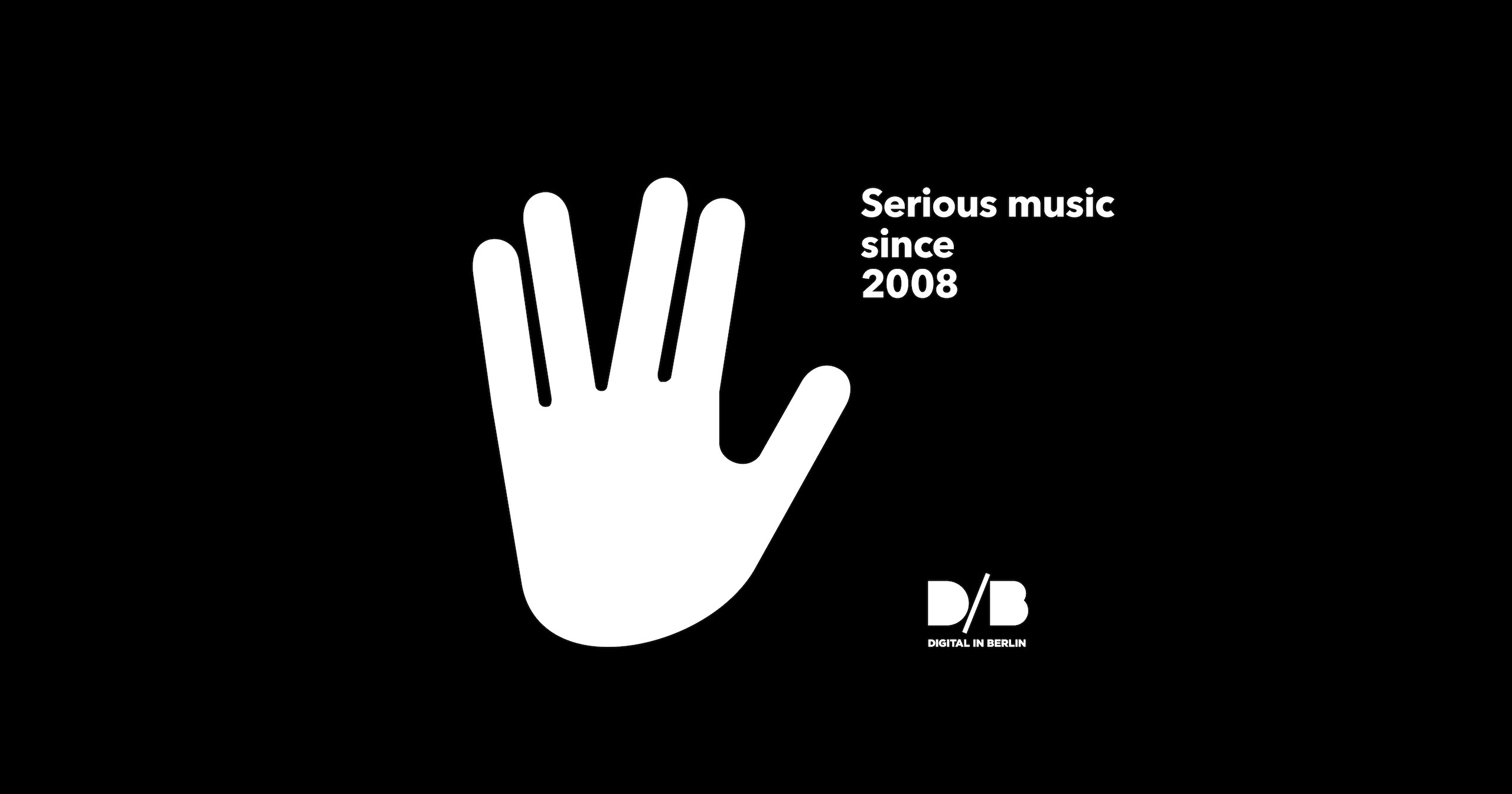Lumisokea is a Belgian-Italian duo, formed by Koenraad Ecker and Andrea Taeggi, both based in Berlin. Their music music can be described as being highly tactile, rich in texture and polyrhythmic, blurring the lines between the acoustic and the electronic to create a challenging and introspective listening experience. Lumisokea’s influences range from dub to musique concrète, various percussion music traditions from Asia & Africa, techno, noise and contemporary classical music, while remaining focused on the key elements in their music : to induce trance-like states, to move bodies and to emphasize the tactile qualities of sound. Lumisokea released a new full-length on Opal Tapes on january 22nd 2016 entitled “Transmissions from Revarsavr” ; it is a tribute to the pioneering spirit of the many visionary composers, theorists and inventors who worked in Russia during the first decades of the Soviet Union, many of whom have not received the recognition they deserve and were censored, silenced or struck down by the totalitarian regimes that followed the October Revolution.
Facts
1: The amount of wealth hidden in tax-havens is estimated to be around 18, 5 Trillion USD (Oxfam, 2013). This amount is approximately the equivalent of what would be needed to pay a free falafel (2, 5 at Falafel2Go on Hermannstrasse) to every inhabitant of Berlin, every day, for the next 5166 years, scharf and mit alles.
2: When Einstürzende Neubauten played at ICA in 1984, the original plan was to dig a tunnel all the way from stage to Buckingham Palace, during the show. Unfortunately, after 21 minutes of mayhem the ICA staff pulled the plug and they had to aband on their plan.
3: Your ears do not only receive sounds, they also emit sounds (at least in 35-50% of the population). These sounds are called Spontaneous Otoacoustic Emissions, and most people are unaware of these sounds.
Questions
1.What is the biggest inspiration for your music?
K/A : In relation to Lumisokea’s music, one of the most consistent sources of inspiration has been the extreme wealth of traditional percussion musics that exist around the world, past and present.
2.How and when did you get into making music?
K : I started playing the cello when I was 5, thanks to my mum.
A : I had a piano at home because my father played it and when I was 8 I started to get lessons
3.What are your 5 favorite albums of all time?
K/A :
Eric Dolphy – Out to Lunch
Bernard Parmegiani – De Natura Sonorum
Gil-Scott Heron – I’m new here
Morton Feldman – Triadic Memories
Shackleton – Three EP’s
Einstürzende Neubauten – Haus der Lüge
Augusto Pablo – King Tubby’s meets Rockers uptown
Keith Jarrett – Spheres & Book of Ways
Choeur des Moines de Chevetogne – Chants de la liturgie Slavonne
Wu Tang Clan – Forever
John Coltrane – Interstellar Space
Mika Vainio – Life (..it eats you up)
4.What do you associate with Berlin?
K : A sense of open space (both physically and mentally), feeling at home, and much better weather than where I’m originally from.
A : An island where making a living as an artist is not only socially accepted but somewhat desirable
5.What’s your favorite place in your town?
K : Besides my home & studio it would probably be Tempelhof, both because of the huge open space as well as because of what it stand s for politically and socially.
A : I enjoy parks, forests and lakes lots: Humboldthain park, Hasenheide, Pl.tzensee, Grunewald, the Wuhlheide woods
6.If there was no music in the world, what would you do instead?
K : Write very mediocre poetry or try to be a cook
A : Become an art critic
7.What was the last record you bought?
K : Bunny Wailer – “Rise and Shine” and Beatriz Ferreyra – “GRM Works”
A : “Drums of Death: Field recordings in Ghana” and “Chinese Taoist Music’ by John Levy
8.Who would you most like to collaborate with?
K : Romeo Castellucci, Blixa Bargeld, Ircam, Cindy van Acker, David Lynch and Michael Haneke
A : Todd Solondz, Rick Strassman, Hiroaki Umeda
9.What was your best gig (as performer or spectator)?
K : Seeing Aretha Franklin live in a huge concert hall when I was very little, a performance of P..rt’s Kanon Pokajanen in a small chapel surrounded by the pastures and the ghosts of the First World War in the west of Fland ers, the first Wax Treatment at Horst I attended just after moving to Berlin, Cindy Van Acker’s “Nixe” with music by Mika Vainio at the Kaaistudio’s in Brussels, Jeri-Jeri at Festsaal Kreuzberg, and seeing Andrew Hill’s quartet at de Singel in Antwerp just 2 weeks before he passed away.
A : Very young: the late Nikita Magaloff playing solo in an old theater in Bergamo. Adolescent: Death playing live, just before Chuck Shuldiner passed. Grown-up: Evan Parker/Richard Barrett/Michael Vatcher at the Bimhuis of Amsterdam
10.How important is technology to your creative process?
K/A : It’s important in the sense of wanting to exploit the possibilities that technology offers. But if this technology would not be available for some reason, I’d still make music, just with different means. I believe that there’s many ways to technically realise a musical idea, and if one technology is not available, one can always find a different tool or technique to achieve the same sound.
11.Do you have siblings and how do they feel about your career?
K : I have two younger brothers who’ve always been very supportive. I can imagine that they must find most of my work pretty puzzling, but they’re too kind to tell me this.
A : I have a younger brother but I don’t really know!

